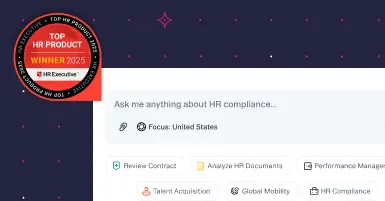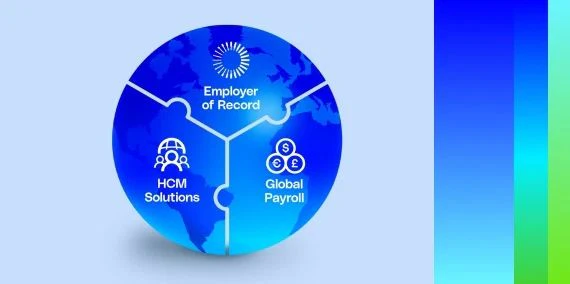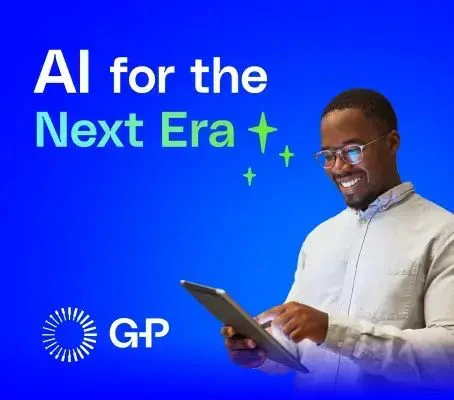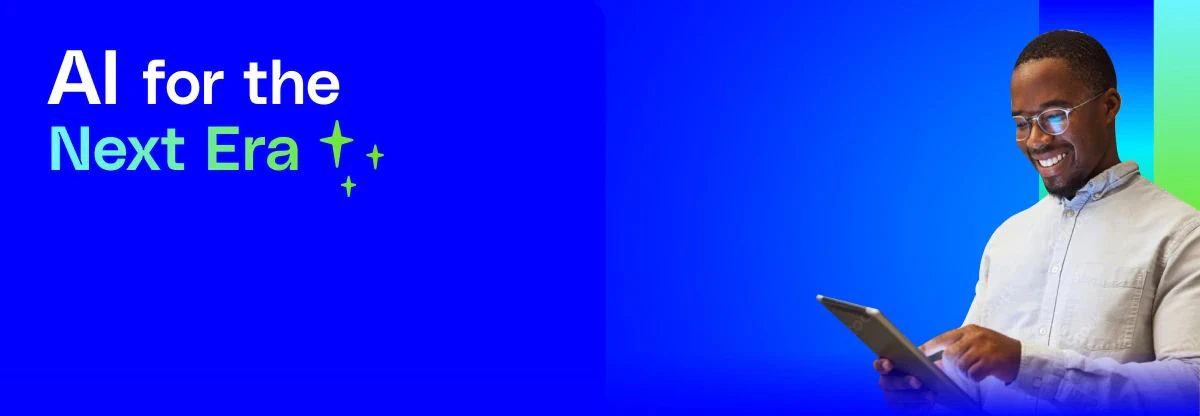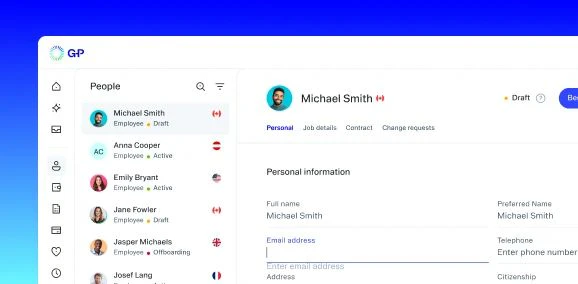In 2022, we set out to rethink our data strategy. Generative AI (GenAI) requires a solid foundation of data and APIs. G-P had the foresight to put a strong foundation in place that enabled us to shape our future with a responsible AI transformation.
We use AI responsibly
Organization-wide compliance is in our DNA. As industry leaders in global employment compliance, we're known for thinking deeply about how we protect our customers. When we adopt and create new tools, we consider every angle: legal, employment, policy, security, architectural, engineering, and data.
Modernization with data first
When we started our modernization journey, we made two components the cornerstone of our process:
-
Domain-driven architecture with an AWS account as the boundary. Each bounded context has its own AWS account because a single team wholly owns that bounded context. With any distributed architecture, most communication is asynchronous and works via events. A bounded context represents a business capability.
-
Databrick’s Data Lakehouse contains all structured and unstructured data. We ingest and clean data through a promotion process. Data in our gold tier is approved, cleansed, labeled, and validated. As the lakehouse listens to events, ingestion happens efficiently without extra effort.
Now, data ingested from events is not only compliant and structured but is also immediately ready for AI-driven insights and applications. We've democratized data with a suite of data products that can be consumed all across the organization for AI, agents, reports, processes, and products.
Innovation starts with experimentation
Innovation happens when everyone has a voice. We introduced an annual AI Hackathon in 2023 as a key initiative. Sure, we have a dedicated AI lab, but innovation doesn't fall on one team. Everyone in the organization (not just engineering) can participate and contribute ideas.
GenAI democratizes innovation
Our newest product, G-P Gia™, started as a winning entry in our inaugural hackathon. The premise was simple: HR leaders have compliance questions and they need answers quickly. The most common questions involve the 180+ countries we serve. The solution to this problem was to use our proprietary data to create a company-specific AI model that can answer any inquiry.
Gia — and our hackathons — are prime examples of responsible use of AI in action. We were able to test tools, explore new techniques, and educate staff all at once. Even better, we could control datasets and have internal experts on hand to assist staff.
Thoughtful AI use can be a challenge for organizations during rapid adoption. Every company will need to navigate usage and learn how to protect customers, staff, and stakeholders. Our early experiments led to the guardrails that guide us today. The main lesson: Be cautious about the tools we use, the data we use to train, and how we integrate with existing systems.
The right AI tool for the job
At G-P, some departments use Wardley Mapping to focus on the most impactful areas for our customers. It’s critical with tech innovation that we think holistically about the capability. Similarly, we started our AI journey before OpenAI launched ChatGPT, but we transitioned our usage and tool choice as the GenAI craze began to accelerate.
Four insights quickly emerged from experience:
-
Today's innovation will become tomorrow's commodity. There’s no point in trying to compete with large language model (LLM) vendors.
-
Stay true to your foundation. No matter what path AI takes, our core values and customer needs remain unchanged. We codify our foundation and knowledge with data and APIs.
-
Separate the agent from the assistant. AI can either assist a user with a task (like a smart co-pilot) or act as an agent that performs the task on their behalf. We do both, but we don’t confuse the two.
-
Rely on standards, not tools. We change tools when they don’t meet our needs. Working to standards is a good practice – and it frees us to experiment and innovate.
The AI tools we use vary by need, but our guiding principle remains the same: Customers don't buy AI from us. They buy frictionless (and compliant) HR technology.
Responsible adoption of AI builds confidence
G-P’s strength is our ability to adapt and our dedication to compliance – and working in tech calls for constant adaptation. Our guardrails and intentional use help us embrace AI and minimize risk in ways that build confidence in users and customers.
We’ve embraced AI without missing a beat. There are many companies and individuals that will be challenged by AI. Like many technologies, it’s amazing, but not magic. We deeply understand how AI works and put foundations in place, in advance, that allow us to create as much value as we can for our customers.
Shape your strategy around intentional and responsible use of AI and you’ll gain access to innovation, trusted tools, and uncapped growth.


